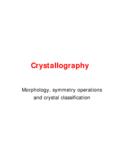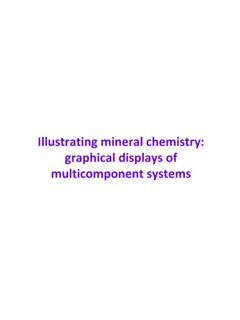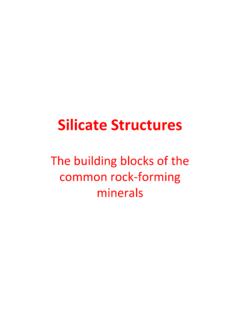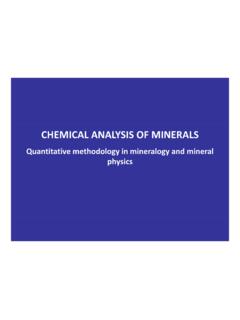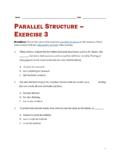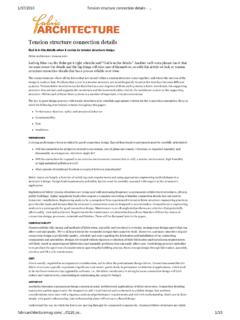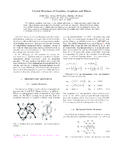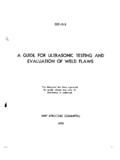Transcription of Single Crystal X ray Diffraction and Structure Analysis
1 Single Crystal X ray Diffraction and Structure AnalysisModern difractometry techniques employ electronic yqpydetectors, in either the first or second to 1970 almost all Single Crystal Diffraction studies used Crystal was mounted in the centre of the camera, the X ray beam is focussed on it, creating diffracted X raysX , the Crystal can be rotated diffracting the y,ygX rays from each of the atomic planes, onto a strip of film encompassing the method and precession methodX raybeamstationary ycrystalThe Laue Method generally of historic value because it does not use filtered gyX rays, however gives nice pictures where symmetry elements can be methods, the Crystal is generally held stationary, and the film is rotated. In addition, the film is not often held flat, but placed in a cylinder giving an extra dimension of data of these techniques have been superceded with electronic detectors: either X ray counters direct measurement of X rays or optical detection of XraysbyCCDX rays by over film include greater accuracy of X ray intensity and greatercountratesgreater count common automated technique is the four circle diffractometer.
2 The name derives from the four arcs used to orient the Crystal bringing the atomic yggplanes into diffracting diffract x rays by an incident beam that sets the atom(s) in motion and yy()creates a ray to vibrate in an infinite number of directionsDiffraction controlsBoth the atom spacingin the Structure and the wavelength of the incident beamare a first order control on the diffracted rays produceddn cos(cosThe mathematical relationships between incident and diffracted x rays are simplifiedintheLaueequationidadn cos(cos =simplified in the Laue equationda= spacing of atoms =wavelengthofradiation = wavelength of radiation = anglePath difference , Path difference 2 , Final equation graphically derived ,,qgp ySingle Crystal studies and identifying mineral g e c ys a s ud es a d dey ge a s uc u wealth of crystallographic informationThe wealth of crystallographic information available, or derivable, from an unknown substance on the basis of X-rays is greatsubstance on the basis of X-rays is system,space group,atom locations, Crystal system, space group, atom locations, bond types, bond locations.))
3 Bond angles, chemical content of unit this information is a combination of the logical and the iterati eand the is a relationship between many features of diffracted X-rays and the diffracting lattice features include intensity of difft d bfil ttildiffracted beam for a given lattice lattice plan has a Bragg Diffraction indice (hkl)indice (hkl).The lattice plane consists of atoms (j) with specific coordinates (x,y,z).p(,y,)The electron cloud of each atom (j) has a scattering factor (f) which depends on its atomic properties can be used in an ihfequation to generate the Structure techniques are used to map atomic spaced parallel does each peak represent?planes of are such planes of atoms expressed in an actual Crystal ?As Crystal do we represent Crystal faces?Miller , Miller Indices also provide information about the internal Structure of a ray Powder DiffractionSingle Crystal material is complicated, time consuming, andrequiresahighdegreeofhomogeneitytothe and requires a high degree of homogeneity to the selected , while ideal (and necessary) for the identification of newmineralspecies,isnotuserfriendlyforth osenew mineral species, is not user friendly for those wishing to identify the constituents of a overcome such hurdles, most diagnostic mineral diffractometry is completed on powdered powder mount is prepared.
4 Very fine grained particles are dhid ldfmounted so as to approach ideal randomness of on the method, the sample is In many cases, the sample is rotated, whiletheeither/or/bothsourceandmounted on a simple the either/or/both source and detector are moved on a continuous powder pattern of identical minerals will result in identical film, the lines will be evenly relative intensity of lineseither in darkness or cps will be equal. Peaks will occur at the same values.

